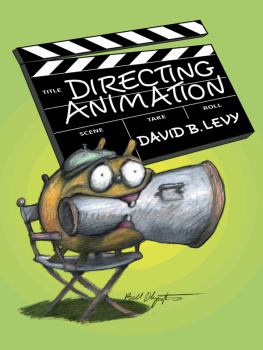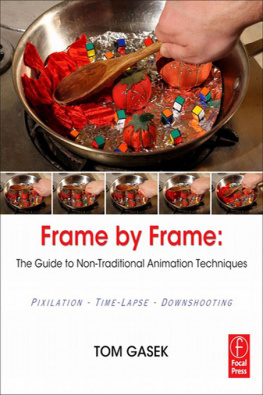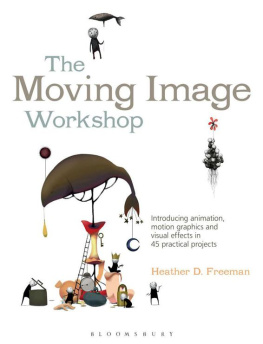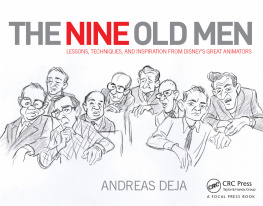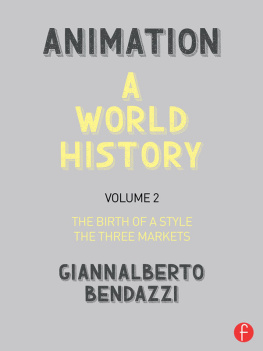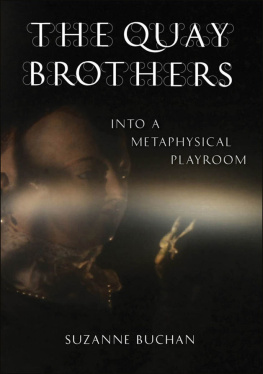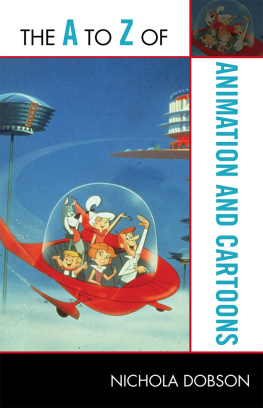Page List
ANIMATION
TECHNIQUES
STEVE ROBERTS

ANIMATION
TECHNIQUES
STEVE ROBERTS

First published in 2021 by
The Crowood Press Ltd
Ramsbury, Marlborough
Wiltshire SN8 2HR
www.crowood.com
This e-book first published in 2021
Steve Roberts 2021
All rights reserved. This e-book is copyright material and must not be copied, reproduced, transferred, distributed, leased, licensed or publicly performed or used in any way except as specifically permitted in writing by the publishers, as allowed under the terms and conditions under which it was purchased or as strictly permitted by applicable copyright law. Any unauthorised distribution or use of this text may be a direct infringement of the authors and publishers rights, and those responsible may be liable in law accordingly.
British Library Cataloguing-in-Publication Data
A catalogue record for this book is available from the British Library.
ISBN 978 1 78500 936 5
Images from The Koala Brothers Famous Flying Films and Koala Brothers Ltd.
Cover design by Sergey Tsvetkov
DEDICATION AND ACKNOWLEDGEMENTS
This book is dedicated to the memory of Shaun McGlinchey (19622019), brilliant animator, inspiration and the best friend a person could have.
A huge thank you to Dee, Felix and Emily, the most important people in my life.
Thanks to Simon and Sara Bor for giving me my first job in animation.
An enormous thank you to David Johnson, Haemin Ko and Katie Chan for the case studies and the use of their images.
Thanks to Doreen Edemafaka for getting me into puppet animation and allowing me to show an image of her set.
Thanks to Adrian Gillan for being such a great life model and allowing images of him to be used in Haemin Kos case study.
Huge thanks to Andy Blazdell (CelAction), Dean Cesaron (TVPaint) and Ton Roosendaal (Blender) for coming up with such amazing software and permission to use images of the brilliant tools we get to use as animators.
Big thanks to Roger Todd for help with casting latex puppet heads and Rich Metson for help with Blender.
Monumental thanks to my best animating mates, Paul Stone, Mal Hartley and Vanessa Luther-Smith. I would not be who I am without you!
Finally, a gigantic thank you to Central St Martins for employing me for so long, thanks to Shaun Clark for putting up with my foibles and thanks to all the students I have ever taught. I have learnt so much more from you than you have learnt from me!
PREFACE
MY BACKGROUND
I have worked in animation for almost forty years. In that time, Ive seen a huge amount of change in the way that animation can be produced, but the basic principles of animation have remained the same. As a child, I was fascinated by animation, whether watching it on television or at the cinema. I found it amazing that drawings or puppets could move, as if by magic.

The Do-it-Yourself Film Animation book , linked to the BBC television series, The Do-it-Yourself Film Animation Show .
When I was ten years old, there was a series on BBC television in the UK called The Do-it-Yourself Film Animation Show , introduced by an animator called Bob Godfrey. In this series, Bob showed how to do cartoon animation using various techniques, how to write for animation and how to use sound for animation. It was a complete revelation to me. I was bought the book as a present and pestered my parents for a cine camera with single frame release. Unfortunately, a cine camera that sophisticated would be incredibly expensive, so I stuck to making animated films as flipbooks in the back of my school exercise books. (In fact, I met an old English teacher of mine a few years ago and she asked me what I was doing now. Im an animator, I replied. Oh, that figures! You were terrible at English, but I always looked forwards to watching your latest movie in the back of your exercise books!)
In the early 1980s, I finally got to try some animation when I was doing a foundation course in art at the age of eighteen. I bought a second-hand Russian clockwork standard 8mm cine camera, built a rostrum to mount it on and had a go at doing cut-out animation. I cant really say the results were particularly impressive, but I was hooked. However, for some strange reason I decided to do a BA course in fine art and sculpture. The problem with fine art is that you need to dig deep into your soul in order to produce decent work. Having looked deep into my soul, I discovered there was nothing there, so I dropped out of art college. I didnt have any plan of what I was going to do next, but then fate took a hand when my mother showed me an advert in a local newspaper, asking for a college leaver to work in an animation studio.
I went for the interview, showing the artwork I had done on my foundation course and got the job. I ended up painting cells on the kitchen table of a new start-up animation company and loved every minute of it. I found that my employers, Simon and Sara Bor of Honeycomb Animation, had studied at West Surrey College of Art and Design in Farnham. Simon had been taught there by Bob Godfrey. When I learnt this, I decided to study animation at Farnham. I also worked in animation studios at the weekends and during the holidays in order to supplement my income. Since that time, I have worked on television series, adverts, feature films and short educational films. I even worked for Bob Godfrey!

The advertisement in a local newspaper that changed my life.
I started directing short animated films for the BBC in the early 1990s and in 1994 began teaching animation back at my old college in Farnham. From the late 1990s, I have specifically trained animators at Central St Martins College of Art and Design to work in the animation industry and over 600 people now have a career in animation as a result. I have devised my own class structure and worked out the best way to learn animation quickly and thoroughly.
From the late 1990s, I have used computers to produce animation, both 2D and 3D. Its always nice to experiment with new techniques and technology, but I still use the old-fashioned lessons learnt over my career. Recently I have moved into puppet animation and produced two films using puppets and clay.
So, all in all I have had a long career in animation and Im sure it will keep me busy for a few years to come.
ABOUT THIS BOOK
Animation and the concept of continuous moving images have been around for thousands of years, predating live-action films (an animation device powered by an oil lamp was invented in China in 150BC). In fact, you could think of live-action films as a development of animation. But as well as having existed for such a long time and involving a lot of traditional techniques, animation is also at the cutting edge of modern technology.
Animation is brilliant at explaining difficult concepts and making them understandable to all. It can put over stories in an engaging way, ranging from being realistic to completely fantastic. Almost any artistic technique for example, sculpture, drawing, painting, printing, textiles, flower arranging and make-up can be incorporated into animation. If you have a visual style or artistic technique, you can animate with it.


